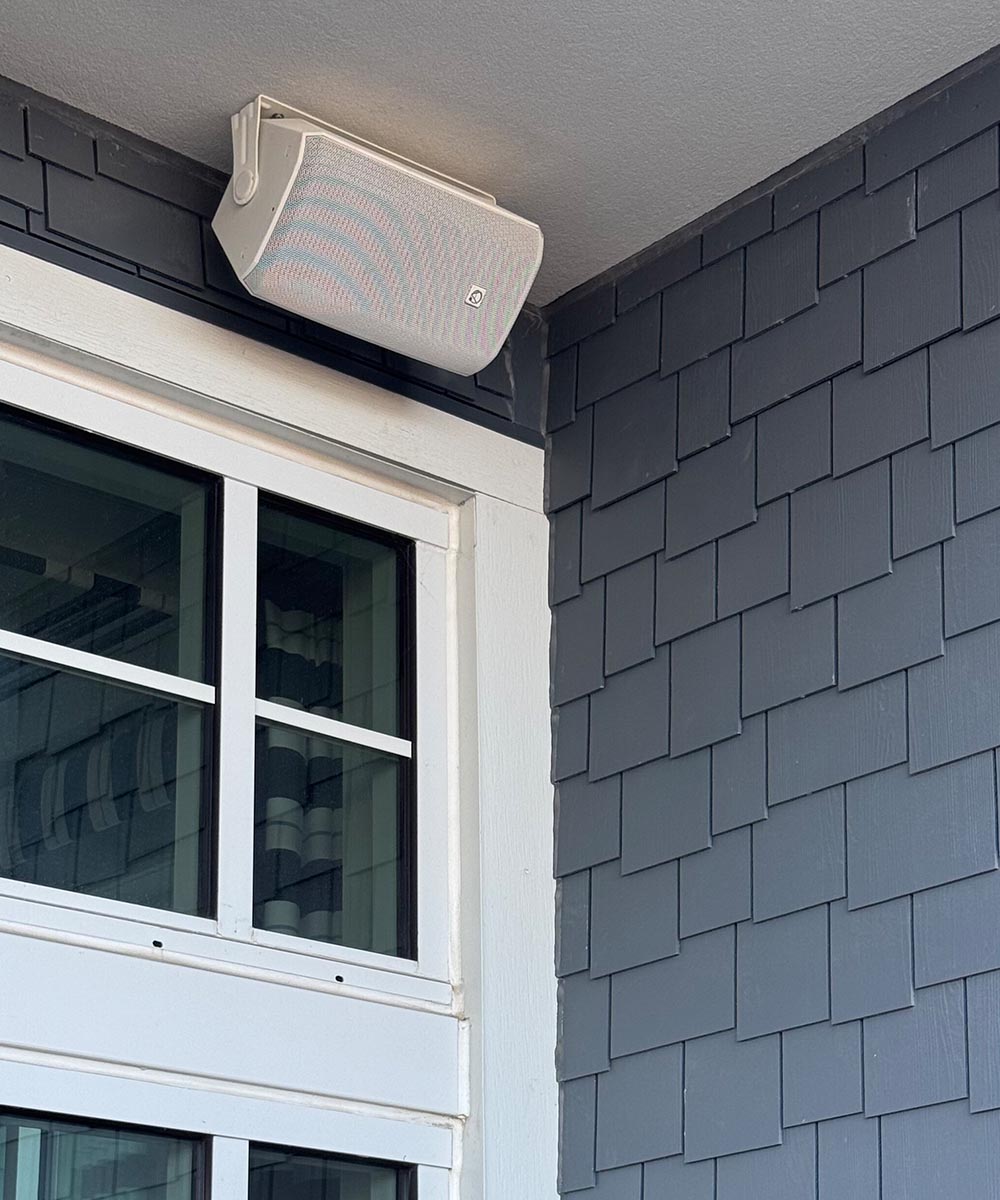At its core, consistent sound refers to the deliberate creation of a continuous, predictable, and coherent auditory experience throughout an entire venue, which can be achieved through strategic design choices, most notably the commitment to using a unified family of loudspeakers from a single manufacturer. Consistent sound is an important concept in audio design, particularly in retail and hospitality environments where consistent brand experiences are essential. It transforms sound from a functional utility into a tool for storytelling, identity, and immersion.

When audio systems are designed around a consistent sonic signature—matching voicing, dispersion, and tonal balance—music, announcements, paging, and other audio cues maintain clarity and character from room to room, indoors and out. This creates a consistent experience not just technically, but emotionally and aesthetically, supporting both brand identity and user comfort. Hotels, resorts, restaurants, retail spaces, and other businesses that prioritize customer impressions stand to benefit significantly from this approach, as sound becomes a part of the brand, subtly guiding guest perception at every step.
Setting the Mood
Consistent sound is important for several reasons. First and foremost, it supports the emotional intent of a space. Audio is a powerful tool for setting mood. Relaxing spa music, upbeat lobby playlists, clear emergency announcements—all these elements rely on clarity, consistency, and predictability.
When the voicing of loudspeakers changes drastically from room to room, that emotional continuity breaks down. Instead of guiding and elevating the experience, sound becomes a distraction or even a point of confusion.
In a luxury hotel, for example, if the background music sounds warm and rich in one lounge but thin and tinny in the corridor, the shift can subtly erode the sense of quality and refinement. Consistent sound protects against that.
For guests and customers, consistent sound means a more comfortable, welcoming, and immersive experience. It reduces auditory fatigue by avoiding the sharp volume or tonal changes that occur when walking between zones with mismatched loudspeakers. This is particularly important in environments where guests may spend extended periods of time, such as at a resort or a fine dining restaurant, where even subconscious discomfort can negatively impact their perception of service or ambiance.
For employees, consistent sound also brings clear advantages. In spaces like a hotel or event center, paging systems and staff communication rely on intelligibility. Predictable voicing across loudspeaker types ensures that announcements sound the same whether they're heard in a lobby, hallway, or back office, making communication more efficient and reducing the chances of misunderstandings or missed information. It also simplifies training and day-to-day operation of the system, as employees don’t have to make manual adjustments for each zone or guess whether an area’s audio is behaving as expected.
Where It Matters Most

Structures that benefit most from consistent sound are those where guests, customers, or staff move through a variety of zones, each with unique acoustic challenges, yet where a consistent experience is expected. Hotels and resorts are prime examples.
A guest may arrive through the valet area, pass into the lobby, check in at the front desk, take an elevator to a hallway, enter a guestroom, dine at a restaurant, relax at the pool, and later visit the fitness center. Without a unified sound system, this journey might be sonically jarring—loud in one area, dull in another, with music that feels warm and full-bodied in the spa but shrill and flat in the bar.
Restaurants with indoor and outdoor dining areas, varied ceiling heights, and open kitchens face similar challenges. A consistent sound system ensures that audio is not just present but integrated, evolving naturally with the space and reinforcing the overall brand identity. Guests don’t necessarily notice consistent sound when it’s done well; it’s simply part of the environment, enhancing the experience without drawing attention to itself.
Problems associated with non-consistent deployments, where various loudspeaker brands or models are mixed haphazardly, are both technical and experiential. From a sonic standpoint, different manufacturers tune their loudspeakers differently. This means frequency responses may not align, tonal characteristics can clash, and coverage patterns may vary wildly. One brand might emphasize bass, another may skew bright in the midrange, and another might struggle with vocal clarity.
The result is a patchwork of inconsistent sound quality that disrupts the flow of a space, an inconsistency that can be particularly jarring when music plays continuously from one room to the next. Instead of providing a smooth, even listening experience, the music may sound boomy in one room and lifeless in another. Paging or announcements may be intelligible in one space but muffled in another, undermining both aesthetics and functionality. These inconsistencies are not just unpleasant; they can actively interfere with operations, confuse guests, and degrade the overall perception of professionalism.
Support the Brand Experience
This is why integrators often rely on a single family of loudspeakers throughout a facility. It's not simply a matter of logistical ease or economies of scale; a matched set of loudspeakers ensures acoustic consistency. Voicing, coverage, and output levels are engineered to work in harmony, allowing designers to predict how sound will behave in different spaces.
This consistency supports faster, more reliable system tuning, better integration with DSP, and easier long-term maintenance. It also allows sound designers to tailor experiences more precisely. If all loudspeakers in a system respond similarly to EQ and delay settings, a designer can confidently create spatial audio experiences that work across the entire venue.
A consistent sound system ensures that audio is not just present but integrated, evolving naturally with the space and reinforcing the overall brand identity.
In a hotel or resort, this means the same warm, detailed voicing can be maintained across all guest-facing areas. Ceiling-mounted loudspeakers in lobbies and corridors blend into the architecture while providing full-range background music. Pendant versions can hang gracefully in high-ceilinged atriums or lounges, delivering consistent audio over large open spaces.
In guest rooms and spas, discreet surface mount or in-ceiling options maintain the same tonal character, ensuring music and announcements remain smooth and soothing. Even outdoor areas like patios, pools, and gardens can be equipped with weather-resistant models, preserving the same quality and character without degradation from environmental exposure. The ability to maintain consistent voicing across different loudspeaker types utilizing identical transducer technology means background music and announcements maintain their integrity no matter where a patron sits.
As commercial spaces grow more sophisticated, the demand for consistent audio experiences will only increase, and those who prioritize consistency in their sound design will be the ones best equipped to deliver environments that feel intentional, elevated, and truly complete. Consistent sound is a critical part of how modern venues design for comfort, clarity, and brand consistency. A thoughtfully deployed loudspeaker system, built around a unified family like the Atlas+Fyne IsoFlare series, ensures predictable performance, simplifies system management, and enhances every aspect of the user experience.

